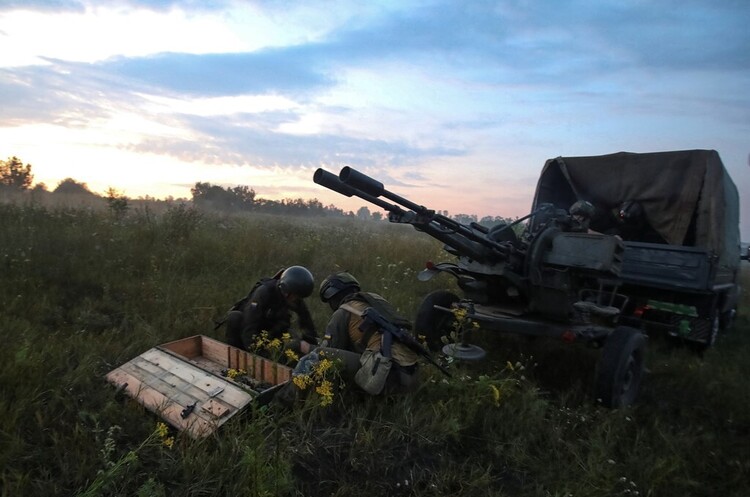Cluster munitions help Ukrainian forces accelerate advance in counteroffensive – WSJ
However, the situation is extremely difficult and it will be clear in the next few weeks whether the Ukrainian Armed Forces have a chance of success in the offensive

The advance of the Ukrainian Armed Forces has accelerated thanks to cluster munitions provided by the United States, according to correspondents of The Wall Street Journal who spoke to Ukrainian soldiers on the front lines.
According to a member of an artillery crew, cluster munitions are most effective in the open field, where Ukrainian units have had difficulty moving through minefields in the southern sector. Such shells are important, although they cannot radically change the situation, the artilleryman explained.
In the next couple of weeks, it may become clear whether the Ukrainian army has a chance to make progress in the offensive, a senior Western diplomat told CNN:
"But to make real progress that would change the balance of power in this conflict, I think it's extremely unlikely," he said.
Democrat Mike Quigley, a member of the U.S. House of Representatives, recently returned from Europe, where he spoke with American commanders who train Ukrainian soldiers.
"We are reminded of the difficulties they [the Ukrainian Armed Forces] face. This is the most difficult period of the war," he said.
After initial losses in June, caused by the need to break through minefields, the Ukrainian Armed Forces changed their tactics. The combined arms operations that Ukrainians had been trained in by NATO have been replaced by familiar attacks by small groups of infantrymen acting independently and advancing as the minefields are cleared. Although Ukrainian forces have taken a number of towns and villages, they have not yet even reached the first line of russian defense, as there are several such lines, a senior Western diplomat said.
"If they couldn't secure a breakthrough in 7-8 weeks, then even if the fighting continues for a few more, what is the likelihood that they will suddenly make it with thinned-out forces? The conditions are very difficult," he said.
The US is aware of these problems but remains hopeful, the official said:
"We all realize that the offensive is harder and slower than everybody would like, but we still believe they have the time and space to make progress," he added.
In recent days, Ukrainian units have come within about 2 km of the main russian defense line near the village of Robotyne in Zaporizhzhia Oblast, again changing tactics and sending reserve units in Western tanks and armored personnel carriers into the battle.
According to the Ukrainian military, Robotyne is of great strategic importance.
Cluster munitions helped the russians to take the positions near Robotyne, a Ukrainian soldier told the WSJ. In late July, his platoon came under heavy fire and wanted to withdraw, but was ordered to take cover. After that, cluster munitions fell on the russian positions. "They were screaming: 'We have many wounded. We need to evacuate. We are withdrawing,'" the soldier said of the shouts coming from russian radios that the Ukrainians were listening to.
Cluster munitions are designed to overwhelm superior enemy forces, says retired Lt. Gen. Ben Hodges, former commander of the U.S. Army in Europe. They are also well suited for destroying artillery formations.
"Cluster bombs are good. They are effective. But the russians are well dug in and they learn quickly," Captain Anatoliy Kharchenko, a Ukrainian intelligence commander, told WSJ.
If you have read this article to the end, we hope that means it was useful for you.
We work to ensure that our journalistic and analytical work is of high quality, and we strive to perform it as competently as possible. This also requires financial independence. Support us for only UAH 196 per month.
Become a Mind subscriber for just USD 5 per month and support the development of independent business journalism!
You can unsubscribe at any time in your LIQPAY account or by sending us an email: [email protected]



